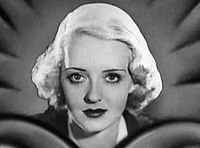
Humphrey DeForest Bogart, colloquially nicknamed Bogie, was an American actor. His performances in classic Hollywood cinema films made him an American cultural icon. In 1999, the American Film Institute selected Bogart as the greatest male star of classic American cinema.

Footlight Parade is a 1933 American pre-Code musical film directed by Lloyd Bacon, with songs written by Harry Warren (music), Al Dubin (lyrics), Sammy Fain (music) and Irving Kahal (lyrics). The film's numbers were staged and choreographed by Busby Berkeley. It starred James Cagney, Joan Blondell, Ruby Keeler and Dick Powell, with featured appearances by Frank McHugh, Guy Kibbee, Hugh Herbert, and Ruth Donnelly.

The Public Enemy is a 1931 American pre-Code gangster film produced and distributed by Warner Bros. The film was directed by William A. Wellman and stars James Cagney, Jean Harlow, Edward Woods, Donald Cook and Joan Blondell. The film relates the story of a young man's rise in the criminal underworld in Prohibition-era urban America. The supporting players include Beryl Mercer, Murray Kinnell, and Mae Clarke. The screenplay is based on an unpublished novel—Beer and Blood by two former newspapermen, John Bright and Kubec Glasmon—who had witnessed some of Al Capone's murderous gang rivalries in Chicago. In 1998, The Public Enemy was selected for preservation in the United States National Film Registry by the Library of Congress as being "culturally, historically, or aesthetically significant".

Rose Joan Blondell was an American actress who performed in film and television for 50 years.

Betty Joan Perske, professionally known as Lauren Bacall, was an American actress. She was named the 20th-greatest female star of classic Hollywood cinema by the American Film Institute and received an Academy Honorary Award from the Academy of Motion Picture Arts and Sciences in 2009 in recognition of her contribution to the Golden Age of motion pictures. She was known for her alluring, sultry presence and her distinctive, husky voice. Bacall was one of the last surviving major stars from the Golden Age of Hollywood cinema.
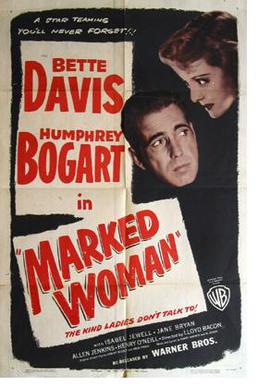
Marked Woman is a 1937 American dramatic crime film directed by Lloyd Bacon and starring Bette Davis and Humphrey Bogart, with featured performances by Lola Lane, Isabel Jewell, Rosalind Marquis, Mayo Methot, Jane Bryan, Eduardo Ciannelli and Allen Jenkins. Set in the underworld of Manhattan, Marked Woman tells the story of a woman who dares to stand up to one of the city's most powerful gangsters.

George Raft was an American film actor and dancer identified with portrayals of gangsters in crime melodramas of the 1930s and 1940s. A stylish leading man in dozens of movies, Raft is remembered for his gangster roles in Quick Millions (1931) with Spencer Tracy, Scarface (1932) with Paul Muni, Each Dawn I Die (1939) with James Cagney, Invisible Stripes (1939) with Humphrey Bogart, and Billy Wilder's comedy Some Like It Hot (1959) with Marilyn Monroe and Jack Lemmon; and as a dancer in Bolero (1934) with Carole Lombard and a truck driver in They Drive by Night (1940) with Ann Sheridan, Ida Lupino and Bogart.
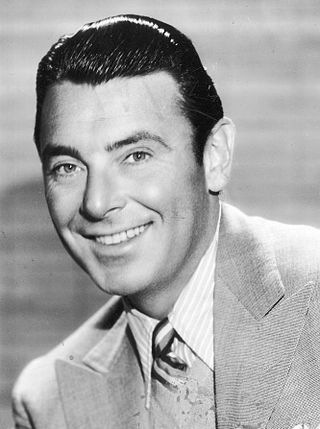
George Brent was an Irish-American stage, film, and television actor. He is best remembered for the eleven films he made with Bette Davis, which included Jezebel and Dark Victory.
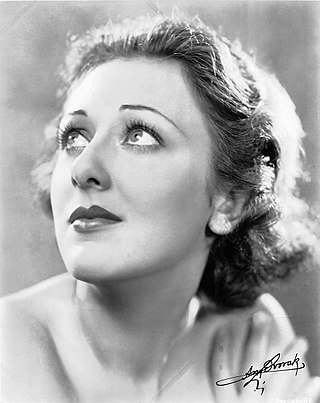
Ann Dvorak was an American stage and film actress.

The Big Sleep is a 1946 American film noir directed by Howard Hawks. William Faulkner, Leigh Brackett and Jules Furthman co-wrote the screenplay, which adapts Raymond Chandler's 1939 novel. The film stars Humphrey Bogart as private detective Philip Marlowe and Lauren Bacall as Vivian Rutledge in a story that begins with blackmail and leads to multiple murders.
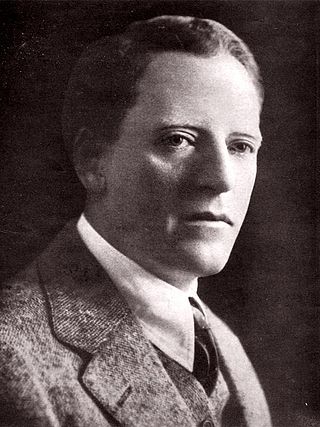
James Cornelius Kirkwood Sr. was an American actor and director.
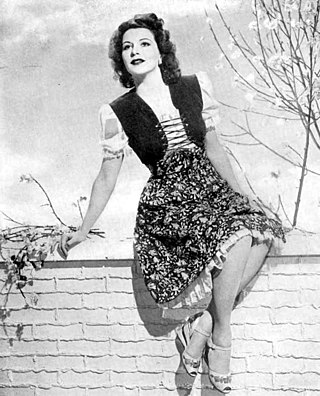
Julie Bishop, previously known as Jacqueline Wells, was an American film and television actress. She appeared in more than 80 films between 1923 and 1957.

Genevieve Tobin was an American actress.
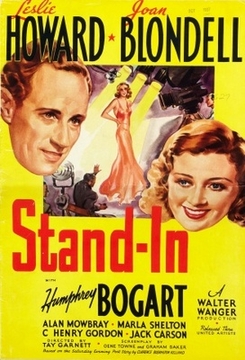
Stand-In is a 1937 American screwball comedy directed by Tay Garnett and starring Leslie Howard, Joan Blondell and Humphrey Bogart. The film's screenplay was written by Gene Towne and C. Graham Baker from a story by Clarence Budington Kelland. It was produced by independent producer Walter Wanger, and released by United Artists. The film is set in Hollywood and satirizes the film industry during the classical Hollywood era.
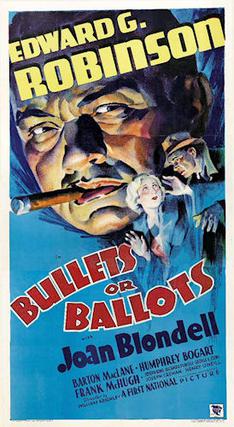
Bullets or Ballots is a 1936 American gangster film starring Edward G. Robinson, Joan Blondell, Barton MacLane, and Humphrey Bogart. Robinson plays a police detective who infiltrates a crime gang. This is the first of several films featuring both Robinson and Bogart.
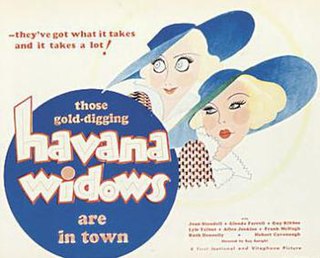
Havana Widows is a 1933 American pre-Code comedy film directed by Ray Enright, starring Joan Blondell and Glenda Farrell. It was released by Warner Bros. on November 18, 1933. Two chorus girls travel to Havana in search of rich husbands. Their target is Deacon Jones, a self-appointed moralist who cannot drink without getting drunk.

Union Depot is a 1932 American pre-Code melodrama film directed by Alfred E. Green for Warner Bros., starring Douglas Fairbanks Jr. and Joan Blondell, and based on an unpublished play by Joe Laurie Jr., Gene Fowler, and Douglas Durkin. The film, an ensemble piece for the studio's contract players, also features performances by Guy Kibbee, Alan Hale, Frank McHugh, David Landau, and George Rosener. In the United Kingdom it was released under the title Gentleman for a Day.
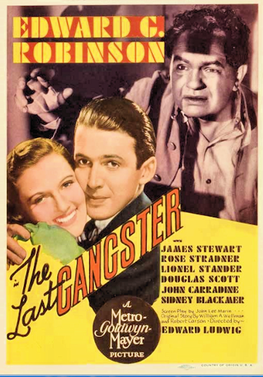
The Last Gangster is a 1937 American crime drama film directed by Edward Ludwig and starring Edward G. Robinson and James Stewart. The supporting cast features Rose Stradner, Lionel Stander and John Carradine.

The Crowd Roars is a 1938 American sports drama film directed by Richard Thorpe and starring Robert Taylor as a boxer who gets entangled in the seamier side of the sport. It was remade in 1947 as Killer McCoy, featuring Mickey Rooney in the title role. This film was not a remake of the 1932 film of the same name starring James Cagney. The supporting cast for the 1938 version features Edward Arnold, Frank Morgan, Lionel Stander, and Jane Wyman.

Miss Pacific Fleet is a 1935 American comedy film directed by Ray Enright. The film stars Joan Blondell, Glenda Farrell, and Hugh Herbert. The film was based on the short story of the same name by Frederick Hazlitt Brennan in the Collier's magazine. It was released by Warner Bros. on December 14, 1935. Two stranded showgirls in California enter a beauty contest "Miss Pacific Fleet" to win the fare back home to New York City.




